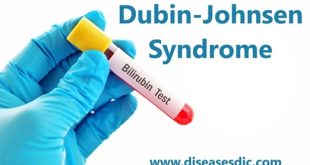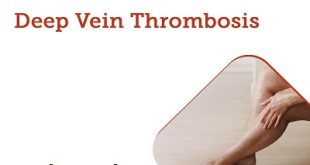What is Dravet Syndrome?
Dravet syndrome is an uncommon condition marked by seizures and developmental challenges. Onset of seizures happens prior to the age of 1, while cognitive, behavioral, and physical issues typically manifest around ages 2 or 3. It’s important to note that Dravet syndrome is a lifelong ailment.
This disorder is linked to a genetic anomaly in the SCN1A gene, although it can also manifest without this genetic defect. Diagnosis hinges on observing a child’s clinical indicators, and diagnostic testing can provide further confirmation. Seizures stemming from Dravet syndrome are notably resistant to control. Standard anticonvulsant treatments, effective for many seizure disorders, often prove ineffective in reducing seizures associated with Dravet syndrome. Nonetheless, ongoing research is exploring novel strategies and treatment options.
Pathophysiology
Dravet syndrome is associated with various pathophysiological mechanisms, with the “interneuron hypothesis” being the most widely accepted. According to this hypothesis, mutations in the SCN1A gene lead to the inhibition of GABAergic inhibitory interneurons, resulting in excessive excitation. This theory is substantiated by research conducted on mouse models.
The Nav1.1 protein is predominantly found in the axon initial segments of parvalbumin-positive interneurons, which are the primary interneuron type affected in Dravet syndrome. Studies using human-derived induced pluripotent stem cell neurons indicate that both GABAergic inhibitory neurons and glutamatergic excitatory neurons in the forebrain of Dravet syndrome patients exhibit hyperexcitability, characterized by increased sodium current density. This hyperexcitability ultimately leads to network hyperexcitability. In cases of SCN1A haploinsufficiency, there may be a compensatory response involving the upregulation of other sodium channels, resulting in increased sodium current.
What are its types?
It is typically considered a single clinical entity with common characteristics and a primary genetic cause (mutations in the SCN1A gene). However, it’s important to note that there can be some variability in the presentation and severity of the condition among individuals. While there isn’t a formal classification of different “types” of Dravet syndrome, healthcare providers may describe cases based on specific features or characteristics. Here are some terms that are sometimes used to describe different aspects of Dravet syndrome:
- Classic Dravet Syndrome: This refers to the typical presentation of the condition, characterized by the onset of seizures in infancy, often triggered by fever, and associated with developmental delays, cognitive impairments, and behavioral difficulties.
- Atypical Dravet Syndrome: Some individuals may exhibit atypical features or a less typical course of the condition. This can include a later onset of seizures, different seizure types, or milder cognitive and developmental challenges.
- Myoclonic Dravet Syndrome: In some cases, the predominant seizure type in Dravet syndrome may be myoclonic seizures, which are characterized by sudden, brief muscle jerks or twitches.
- Genetic Variants: While SCN1A mutations are the most common genetic cause of Dravet syndrome, there can be rare cases where mutations in other genes are associated with similar clinical features. These cases may be referred to as “Dravet-like syndromes” or “Dravet syndrome spectrum disorders.”
Epidemiology
It is a rare and severe epileptic encephalopathy with an estimated prevalence of approximately 1 in 15,000 to 1 in 40,000 individuals in the general population. It typically presents in infancy or early childhood, with the majority of cases arising due to de novo mutations in the SCN1A gene. It affects both males and females, and it is considered a global condition, with reported cases in various countries around the world. While it is a rare disorder, its impact can be profound, leading to recurrent seizures, developmental delays, and cognitive impairments in affected individuals, highlighting the importance of early diagnosis and specialized care.
Symptoms of Dravet Syndrome
Most babies have a seizure where only one side of their body is shaking (known as a hemiclonic seizure) or have a full-body shaking seizure (called a generalized tonic-clonic seizure). As a child gets older, they might experience other types of seizures like:
- Absence seizures may cause a child to stare into space, stop talking abruptly and then start talking again. They may also have repetitive movements like chewing their lips or moving a hand.
- Myoclonic seizures are known for their brief, shock-like muscle jerks.
A child might also experience:
- Seizures frequently triggered by a fever and an increase in body temperature
- Behavioral difficulties
- Developmental delays (such as struggles with coordination, speech and language, learning and/or playing)
- Sleep problems
- Unsteady walking
Causes of Dravet Syndrome
It is primarily caused by genetic mutations. The vast majority of cases are linked to mutations in a specific gene called SCN1A, which encodes for a sodium ion channel in the brain. These mutations disrupt the normal functioning of this channel, leading to increased neuronal excitability and a higher likelihood of seizures. While the exact cause of these genetic mutations is not always clear, they are typically not preventable and are considered spontaneous, meaning they are not inherited from parents.
Key points about the causes of Dravet syndrome:
- Genetic Mutation (SCN1A): The most common and well-recognized cause of Dravet syndrome is mutations in the SCN1A gene. These mutations typically occur spontaneously and are not inherited from parents in most cases.
- Rare Genetic Variants: In a small number of cases, other rare genetic variants or mutations in different genes may be associated with Dravet syndrome. However, SCN1A mutations are the most common and well-established genetic cause.
- Spontaneous Mutations: SCN1A mutations often occur randomly and are not related to any specific environmental factors or behaviors. They are considered de novo mutations, meaning they arise in an individual’s genetic code without being passed down from parents.
- No Known Preventable Causes: Since Dravet syndrome is primarily a genetic disorder, there are no known lifestyle changes or interventions that can prevent it. It is not caused by factors such as infections, trauma, or environmental exposures.
- Genetic Testing: Diagnosis of Dravet syndrome often involves genetic testing to identify mutations in the SCN1A gene or other relevant genes. This genetic testing can help confirm the underlying cause of the condition.
Complications of Dravet Syndrome
People may lose developmental and cognitive skills. They may also experience speech impairment and difficulty walking.
In adulthood, nighttime seizures may occur. More serious complications include status epilepticus and sudden death.
Up to 20 percent of people with Dravet syndrome die from either SUDEP (sudden unexpected death in epilepsy), prolonged seizures, seizure-related accidents like drowning, or infections.
Other complications that can develop include:
- Chronic infections
- Disruptions in the autonomic nervous system, which can lead to problems with regulating body temperature, heart rate, blood pressure, and other issues
- Sleeping issues
- Growth and nutrition problems
- Orthopedic conditions
- Sensory integration disorders
Diagnosis
Dravet Syndrome is first and foremost a clinical diagnosis, based on the evolution of specific types of seizures. Children with Dravet syndrome typically have normal developmental progress in the first years of life. Often seizures first begin while associated with fever or febrile illness. These are typically prolonged, lasting 20 minutes or more, involving rhythmic shaking of one side of the body.
Children often develop different seizure types over time. Epilepsy in Dravet Syndrome is usually difficult to fully control with medication. Affected children may have repeated episodes of status epilepticus, prolonged seizures which are difficult to stop and require hospitalization.
Specific Tests
Genetic testing: While Dravet syndrome is largely a clinical diagnosis, a high percentage of people with the syndrome test positive for abnormality in a specific gene, the SCN1A gene. So, this gene defect is often a helpful means of confirming the diagnosis. Some other genes have also been implicated.
Other investigations:
- A Brain MRI scan is usually normal in children presenting with this condition.
- An EEG (recording of electrical activity of the brain) will usually show abnormalities which confirm a tendency to epileptic seizures.
Treatment of Dravet Syndrome
The treatment is complex and typically involves a multi-faceted approach aimed at controlling seizures and managing associated symptoms. Here are some of the common treatment strategies:
Anti-Epileptic Medications
Medications are often prescribed to help reduce the frequency and severity of seizures. Some commonly used drugs include clobazam, valproate, and stiripentol. However, it’s important to note that Dravet syndrome can be resistant to many anti-epileptic drugs, and finding the right combination and dosage can be challenging.
Rescue Medications
In emergency situations when seizures are particularly prolonged or severe, healthcare providers may recommend the use of rescue medications, such as rectal diazepam or buccal midazolam, to stop the seizure activity.
Ketogenic Diet
Some individuals with Dravet syndrome may benefit from a ketogenic diet, which is a high-fat, low-carbohydrate diet that can help reduce seizure frequency in some cases.
Physical and Occupational Therapy
Children with Dravet syndrome often experience developmental delays and motor difficulties. Physical and occupational therapy can help address these issues and improve the individual’s quality of life.
Speech Therapy
Speech therapy may be recommended for individuals with speech and communication difficulties.
Behavioral and Psychiatric Support
Managing behavioral and psychiatric symptoms, such as anxiety and mood disorders, is an important aspect of care. Therapy and medications may be prescribed to address these issues.
Seizure Monitoring
Continuous seizure monitoring and tracking are crucial to assess treatment effectiveness and make necessary adjustments.
Supportive Care
Ongoing medical supervision and support from a team of healthcare professionals, including neurologists, pediatricians, and specialists, are essential to adapt treatment strategies as needed and provide comprehensive care.
Research and Clinical Trials
Some families may consider participating in clinical trials or studies focused on Dravet syndrome to explore experimental treatments and therapies.
It’s important to note that treatment plans should be tailored to each individual’s specific needs and may evolve over time as the condition progresses.
How to prevent Dravet Syndrome?
It is a genetic condition, and there is no known way to prevent it. It is caused by mutations in the SCN1A gene, and these mutations are typically not preventable through lifestyle changes or interventions. Since it is a genetic disorder, it is usually inherited from one’s parents.
Here are some key points to keep in mind:
- It is a genetic disorder, meaning it is caused by specific gene mutations.
- These genetic mutations are typically not preventable through lifestyle changes or medical interventions.
- If there is a family history of Dravet syndrome or related genetic conditions, genetic counselling may be helpful to understand the risk of passing on the condition to future children.
- Early diagnosis and appropriate medical management are essential for improving the quality of life for individuals with Dravet syndrome, but prevention of the condition itself is not currently possible.
- Research into genetic disorders like Dravet syndrome continues to advance, and future breakthroughs may lead to new prevention or treatment strategies. However, as of now, no prevention methods exist.
 Diseases Treatments Dictionary This is complete solution to read all diseases treatments Which covers Prevention, Causes, Symptoms, Medical Terms, Drugs, Prescription, Natural Remedies with cures and Treatments. Most of the common diseases were listed in names, split with categories.
Diseases Treatments Dictionary This is complete solution to read all diseases treatments Which covers Prevention, Causes, Symptoms, Medical Terms, Drugs, Prescription, Natural Remedies with cures and Treatments. Most of the common diseases were listed in names, split with categories.







